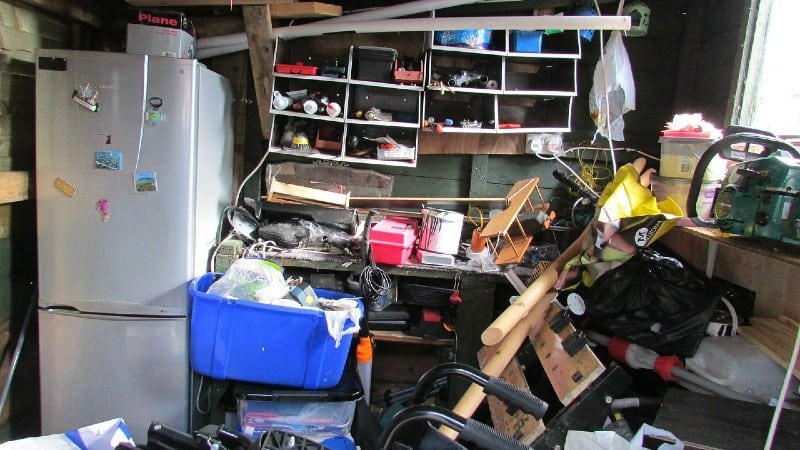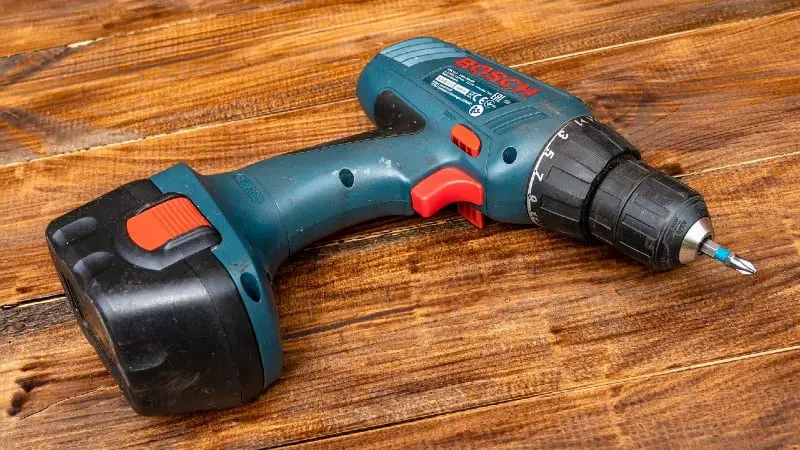Your weekends are busy as it is. You don’t need something else to take up time. This is why I’ve put together a list of my 11 favorite woodworking tips that save you time and maximize the results you can get from your weekend.
Set your goals
Be realistic about your schedule and plan around your commitments. Whether it’s getting the kids to soccer practice or seeing a friend, account for those activities when scheduling your woodworking activities.
I’m not suggesting you need to clear your Saturday and Sunday for woodworking, but there’s no reason you can’t squeeze a few extra hours out of the weekend by making a few smart choices about what you work on. Here are some tips that will help you fit woodworking into your life in a way that makes it easy to be more productive and make more in-roads with your projects:
Plan ahead – If you have a project in mind, save time at the lumberyard by developing a shopping list beforehand. And if you have to pick up a lot of wood, try to schedule your trip on a weekday when traffic is lighter.
Schedule your time – Let’s face it: the whole point of making a plan is so you don’t overbook yourself and start panicking that you can’t get anything done. This could be in the form of a weekly calendar or post-it notes on your mirror! The point is, make it visible so you are held accountable.
Be realistic about what you’re going to get done – If you don’t have the budget or time to add on to your house, you can still make wonderful changes and improvements such as painting a room, adding a deck, or upgrading appliances.
Break Tasks Up – Do something different. Take breaks when doing tasks in order to stay motivated and focused. Plan out these small breaks so they don’t interfere with completing your task but they keep you moving forward with momentum.
Prepare For The Worst – Things don’t always go as planned when working with wood. You might not have everything you need or something could go wrong along the way. Be prepared for anything with extra supplies on hand at all times so that you don’t waste any time running out for more supplies if things go awry.
Do a little at a time – The best way to avoid feeling overwhelmed is to break large projects into smaller tasks. Don’t try to finish your entire list for Saturday or Sunday in one sitting! Take breaks and work on a different task when you get bored or frustrated.
Don’t make work a priority over family time – Don’t let work take precedence over your relationships with your family. And don’t get so wrapped up in your project that you neglect it.
Don’t neglect yourself either – Including getting enough sleep and eating right. As a woodworker, you need to be mentally and physically resilient, so surround yourself with those who will help keep you on track.
Make it fun – Do something different this weekend or work on a project that will benefit your family for years.
There’s never a bad time to work on your woodworking skills. But if you’re looking for a new project, this weekend might be the perfect time to start something new and challenging. On weekends, you can really focus and get some good projects done that will make your home look and feel completely different.

Choose quality over quantity
It’s tempting to buy cheap boards that are mostly defect-free since they can save you money, but they will take longer to plane and finish into usable boards. Instead, spend the extra money on lumber that is as defect-free as possible so that you can get your project done faster and with fewer headaches.
Some woodworkers get so caught up in the process of building that they’re no longer paying attention to the final product. When you focus on quality over quantity, you’re more likely to have a piece of furniture that fits your needs and makes a statement.
Here are a few tips to help you build quality projects using your weekend:
Do it right – Don’t make mistakes that could waste time and money – like cutting the wrong length of wood or using the wrong-sized router bit. That said, don’t spend too much time perfecting every little detail. Focus instead on making sure everything is set up correctly before moving on to the next step, then get back to your project as soon as possible when you finish one step.
Make things that last – Find inspiration from antique furniture and design elements from other sources and make things that will last for decades rather than just days or weeks.
Use an older piece of wood – Many people use 2x4s for weekend projects because they’re easy to find at home improvement stores or in their garage. However, many of the older woodworking pieces are made from quality wood materials such as oak, hickory, and maple. Try using those materials rather than cheap 2x4s.
Don’t let the sheer volume of work overwhelm you – It’s important to pick your projects carefully and focus on high-quality work that will give you pride in what you produce.
Don’t worry too much about how many hours it takes to complete your project. Instead, focus on making sure that you get the best result possible with each and every piece of wood you use. If you take care now, you won’t have to spend hours fixing mistakes later.
Measure twice, cut once
So you planned enough time on your weekend to finish a woodworking project, but you didn’t measure carefully. Now you have to redo the entire piece. Don’t let that happen to you! Measure and mark carefully so you can accurately cut wood pieces.
A large ruler is a great investment to make. Try to find one that is 6 feet long or more. This will allow you to make cut lines across an entire sheet of paneling or plywood. It can be worth the extra cost – you can avoid the chore of piecing together lines made by smaller rulers. While you can also use a very long straightedge (if you can find one!), a large ruler is often faster.
Make sure to account for the “kerf” when taking a measurement in woodworking: The “kerf” is equal to the width of wooden material removed by the blade.
For example, if you are cutting a shelf from a piece of plywood, there will be two kerfs on the edges where the saw blade removes material from the plywood. If you don’t account for those kerfs in your measurements, you will end up with a shelf that’s slightly smaller than the space you need to fill.
Take your time when doing your own woodworking. You may have heard the saying “slow and steady wins the race”, but it really applies here as well. Do not rush into things, even if you think that they are easy. Remember that even a small mistake can cost you money in the end especially if you are using expensive tools and materials for your project. So, measure two times (or even more if you’re not sure the measurements are correct!).
Don’t forget safety gear
Woodworking is a great hobby to take up. But if you are just starting out, the tools and equipment can be overwhelming. These safety tips will help you get started:
Invest in a quality set of safety glasses – You will be using power tools and saws that can cause wood chips and dust to fly up into your face. If you do not wear proper eye protection you can end up with serious vision problems or even lose your eyesight.
Buy gloves that fit well – Protect your hands from splinters and rough edges on the lumber. Gloves also make it easier to grip the project when you’re working with it.
Wear a dust mask while sawing, sanding, or drilling – Fine dust particles can cause breathing issues if they are breathed in over time. The dust mask will prevent this from happening to you while you work on projects in your garage or shop.
Use hearing protection if possible – Many power tools make loud noises that can damage your hearing over time if you do not use proper protection while working with them. This is especially true if you will be working in a confined space such as a garage or basement where sound waves bounce off the walls and flooring.
Here are other ways to make weekend woodworking safer:
Have a fire extinguisher in your shop – You might be surprised at the number of woodworkers who don’t have a fire extinguisher in their woodworking shop. To avoid becoming one of those people, and to ensure your safety and the safety of your workshop (and possibly other structures), make sure you have a fire extinguisher mounted in an easy-to-access location.
Make sure you have a first aid kit on hand at all times – You never know when an accident might happen and if someone gets hurt, you’ll want to be prepared. Having a first aid kit close by will allow you to take care of things quickly before they become worse.
Hair – If you have long hair, keep it tied back so that it does not get caught in any of the tools. There are many stories about people getting their hair caught in power tools and this is something that should be avoided at all costs. A simple hair tie will do the trick and make sure that your hair is out of the way while you work. This goes for facial hair as well!
Flooring – Always wear shoes with a good grip when working with wood. High heels or any other type of shoe with an elevated heel can cause you to lose your balance easily, which could result in injury. Shoes with steel toes are another good choice because they provide protection against heavy objects falling on your feet
Children – If you have kids in your household who might get curious about what you are doing in the garage or shop, make sure they don’t have access to any sharp tools or dangerous materials. Even if they aren’t interested in helping with your project, kids can be very creative in finding ways to put things into their mouths and ears and up their noses – all of which can cause serious problems for little ones!
Remember, safety should be the first priority when you’re working on any project. With the right equipment and a little planning ahead of time, you can complete your wooden projects with minimal fuss and even less injury.

Organize your workspace
When working on a woodworking project it is important to have everything organized. This includes not only your tools but also the work area around them. The last thing you would want is a jumbled mess. Here are some excellent tips on how to organize your workspace:
Create a checklist to help you keep track of materials – It’s easy to forget the smallest items that could make or break a project – nails, putty, screws, etc. Make a list of everything you need and check it off as you go along.
Label your tools – Label your tools to avoid having to search for them in the future. Use duct tape or masking tape to label each tool with its name and type if it is not already labeled. This includes labeling drill bits, wrenches, screwdrivers, nails, and screws. Label smaller items in groups so that they are easier to recognize when needed.
Label your cuts – Labeling your woodworking cuts is one of those things that seems like a waste of time, especially considering how much work you have to get done during a weekend. But it’s very important to label your woodworking cuts, and it’s worth taking the extra time to do so.
The most obvious thing that can happen if you don’t label your woodworking cuts is that you won’t remember which side of the cut was supposed to be kept and which side was supposed to be removed. It can be very frustrating when this happens.
If you’ve got a lot of parts in your project, you can easily get them mixed up and end up cutting the wrong one twice. Labeling each piece with its exact dimensions will make it easier for you to find them later on when needed.
Use clear containers to store nails and screws – Nails, screws and other bits of hardware tend to roll around in a drawer, creating problems when you need to find a specific size or type. Using clear containers with lids will help you stay organized and on-task.
Get a toolbox with lots of compartments – We all know that there’s nothing more annoying than having to dig through a messy toolbox in order to find the tools you need. If you want to keep your tools organized and not spend hours looking for the right screwdriver, then get a toolbox with lots of compartments.
Have all your equipment within easy reach – You should also try to organize your equipment in a way that makes sense for your workflow. If you’re working on a project that requires many steps, set up your tools in a logical order so you’re not constantly searching for the next tool or material you need.
Keep your workspace clean and tidy – If there’s one thing woodworkers love, it’s a clean, organized workspace. Keeping your workspace clean and tidy also makes you more efficient and safer, because you’ll be able to find what you need quickly and won’t trip over clutter or bump into tools or supplies.
Always work with a clean workbench and dust-free workspace – follow proper shop safety rules when using power tools and working with wood. It’s easy to create a debris-strewn disaster zone if you’re not careful!
Protect the work surface of your project – To prevent damage to your work surface, place a protective covering over it before you begin cutting or sanding. This will also help keep any dust and wood chips from resting on the project. You’ll thank yourself for it later.
Good organization is essential for any type of job or creative process. Besides being more efficient, it also creates a positive environment for you to work in and enjoy. With these tips, you should be well on your way to an organized and enjoyable weekend of woodworking.

Choose the right tools for the job
It’s important to do your homework before you begin your project. This means that you need to know what tools and materials you need, exactly how much time and effort it will take to complete the project, and how much each piece of equipment costs. Here are some woodworking tools to choose from:
Saws – A saw is one of the most important tools in a woodworker’s toolbox. There are many different types of saws, including hand saws, circular saws, and jigsaws.
A hand saw is one of the most useful tools in any shop. While there are several types of hand saws, each has its own pros and cons.
When it comes to cutting wood, one of the first types of power saws that come to mind is the circular saw. However, this type of saw is only good when you’re cutting straight lines across a flat surface. It’s not ideal when you want to make more complex cuts and curves in wood. That’s where other kinds of saws come in handy.
A jigsaw is a type of saw that allows you to cut curves or irregular shapes. This can be accomplished with the use of a very thin blade that moves up and down.
Electric Drill – An electric drill is one of the most versatile tools you can own. In addition to making holes, it can drive screws, sand and buff surfaces, and even mix paint.

Electric Router – An electric router is a great tool to have in your workshop if you want to do more than just drill holes in your workpieces. Routers can help you create decorative edges and other shapes on your pieces of wood, which will add interest to your project.
The electric router is a popular tool among woodworkers because it’s versatile, easy to use, and produces great results. You’ll be able to use an electric router for many different types of projects.
Electric Sander – An electric sander is one of the most important woodworking tools that you can have in your arsenal because it can help to improve the efficiency of your work. While this tool is available in multiple sizes and shapes, there are two main types: orbital and belt sanders. They both work by allowing you to sand surfaces quickly and efficiently, but they can also be used for various types of tasks such as sanding flat surfaces or removing old paint. The type of sander that you use will depend on the specific task that you need to accomplish during your project.
Brush – A brush is a tool that’s used in woodworking to apply a liquid or a paste to the surface of the wood. It’s often used to apply paint, stain, or glue. The brush is an essential tool that every woodworker needs.
Woodworking clamps – Clamps are used to hold pieces of wood together while they are glued, nailed, screwed, or otherwise fastened together. They can be used on almost any type of wood project, including:
- Making drawers and cabinets
- Building tables, chairs, and bookcases
- Joining two pieces of molding together to create a corner
- Repairing broken furniture legs
Hammer – A woodworking hammer is an essential tool for any carpenter or handyman. Woodworking hammers are used to drive nails and other objects into a wooden surface. If you are a woodworker, you will have to have many different types of woodworking hammers in your toolbox because there are so many different things that you can do with them.
The first thing to consider when buying a woodworking hammer is that it should be comfortable in your hand. A good fit means you can use it more often, and that means smaller projects get done faster.
Wood Chisel – A chisel is a hand-held tool with a blade attached to the end. In many cases, this blade will have a handle on the back. The blade itself is usually made from steel or other hard metal and can be used for cutting through various types of wood and other materials. The handle is usually made from some type of plastic and has an ergonomic design that makes it easy to hold when working.
Drill Bits – A drill bit is designed to cut holes in wood, metal, and other materials. It has a rotating shaft that causes it to spin as it cuts through the material. There are several types of drill bits:
- Twist bit for cutting holes
- Forstner bit for precision work
- Spade bit with flat blade for cutting large holes
Nail sets – One tool worth owning right away is a nail set – a small punch used to drive nails below the surface of the wood so that the holes can be filled and sanded smooth. A nail set will save you time and prevent damage if you plan on painting or finishing projects that involve lots of nailing.
Utility knife – Utility knives are used in many situations where sharp blades need to cut through tough materials quickly and safely. A utility knife is a good choice when working with material such as:
- wood
- cardboard
- paper
- vinyl flooring
Tape measure – A tape measure is one of the most important tools in any woodworker’s toolbox. Tape measures come in many different sizes and styles, with many different features. The main purpose of a tape measure is to measure distance, usually in inches or centimeters. They can also be used for measuring diameter and circumference (the distance around a circle).
Woodworking is a challenge that people have been taking up for thousands of years. And with the proper tools, substantial results can quickly be achieved in just a short weekend. By carefully choosing the right woodworking tools for the job, anyone can build something that will look great in their home, office, or study room.
Have enough light
Make sure you have enough light when you work on your woodworking project so that you can see your work properly. When you are cutting, soldering, or sanding, you will need a lot of light to avoid making mistakes or getting hurt. You do not want to see only shadows if you are working with power tools.

Store tools and equipment properly
You don’t want to spend your hard-earned money on a power saw, drill, or another tool, only to have it damaged by improper storage. It is important that you store all that equipment properly so that it lasts as long as possible.
There are many places where you can store tools and equipment when they’re not being used, such as in a tool shed. If you do not have enough space for this, then consider storing them in a garage where they will be out of the way. Even if you are just storing them temporarily, make sure that they are protected from dust and dirt.
Learn how to use each tool
There are many different types of woodworking tools and each one has its own purpose. Some woodworkers prefer to focus on one type of tool and use it for every project they do. Other woodworkers will focus on all the tools they use and learn how to use each one effectively.
Learning how to use each woodworking tool will make your job easier, as well as make it easier for you to create more projects. The more knowledge you have about the tools you’ll be using, the better prepared you’ll be when it comes time to work on your project.
Only use sharp tools
A dull blade can cause you to lose control of the tool and injure yourself. Plus, when a tool is sharp, it cuts through material more easily and with less pressure, so there’s less chance of injury or damage to the workpiece.
Also, you’ll get better results with a sharp blade: If a cut is off by a fraction of an inch, over time those small inaccuracies can add up to a big problem. Sharp tools make more precise cuts and help keep your projects on track.
Don’t force a cut
When you’re cutting, it’s best to let your saw do the work. If you try to force the saw through the wood, you’ll be less in control of your cut and could cause the saw to kick back at you.
Frequently Asked Questions
How can I make the most money out of woodworking?
To make money from woodworking, you need to have quality craftsmanship. That means paying attention to detail, not taking shortcuts, and creating a product that people will love.
You can also build your own website to promote your woodworking services and products. Include photos of your work, along with testimonials from satisfied customers.
Once you have a website, it’s time to get noticed. Join social media sites such as Twitter, Facebook, and LinkedIn so people can find you and follow what you’re doing online. I wrote an article about choosing a niche for your website.
Make sure that you’re always working on projects that interest people because they’ll want to see what else is available through your business.
How can I make my woodshop more efficient?
if you want to make your woodshop more efficient, you should go over all of your tools and supplies and see what you have in there. Inventorying the tools and supplies that you have in your workshop is a great way to get a better idea of what needs to be done and how much time it will take.
Inspecting the tools and supplies that are in your toolbox will give you a better understanding of how they work, how they should be used, and what needs to be kept in them. It will also give you a better idea of whether or not the tools need to be repaired or replaced.
Organizing tools and supplies into a system will allow you to know where everything is located at all times. This will help you save time when working on projects because it will allow you to quickly find what you need without having to search for it yourself.
Can you get rich woodworking?
Woodworking is a great way to spend your weekend. It’s relaxing and rewarding, but most of all it’s fun! Woodworking can be your favorite hobby, a great way to make money, or even a source of income for you.
Many people have become successful in woodworking by creating and selling their own products. With this said, if you want to become wealthy by doing woodwork then there are many opportunities out there for you.
Is woodworking a profitable hobby?
Woodworking can be very profitable if you have a plan and stick to it. It’s important to know what you want to do, where you want to do it, and when you’re going to do it. If you don’t have any ideas of what you’d like to make, think about making a project that has something that interests you and fits into your budget.
There are plenty of people who want custom furniture and accessories in their homes but don’t have the skill or time to create them. With a little marketing and promotion, you could turn your hobby into a side business that earns extra spending money each month.

Conclusion: Woodworking Tips To Make The Most Of Your Weekend
Spending some time in the workshop is something that all woodworkers benefit from. After all, that’s what this hobby is about: spending time working with your hands and mind and coming up with creative solutions to problems. Whether you make something for fun or to sell, there’s ample opportunity to do something of value and enjoy a great hobby at the same time. So get out there and use these tips over the weekend, and hopefully, they’ll help you have a great time in the workshop!
Did you enjoy this article? If so, you might be interested in my Pinterest profile. It contains pins about Woodworking, Tools, DIY&Crafts, along with other topics!


